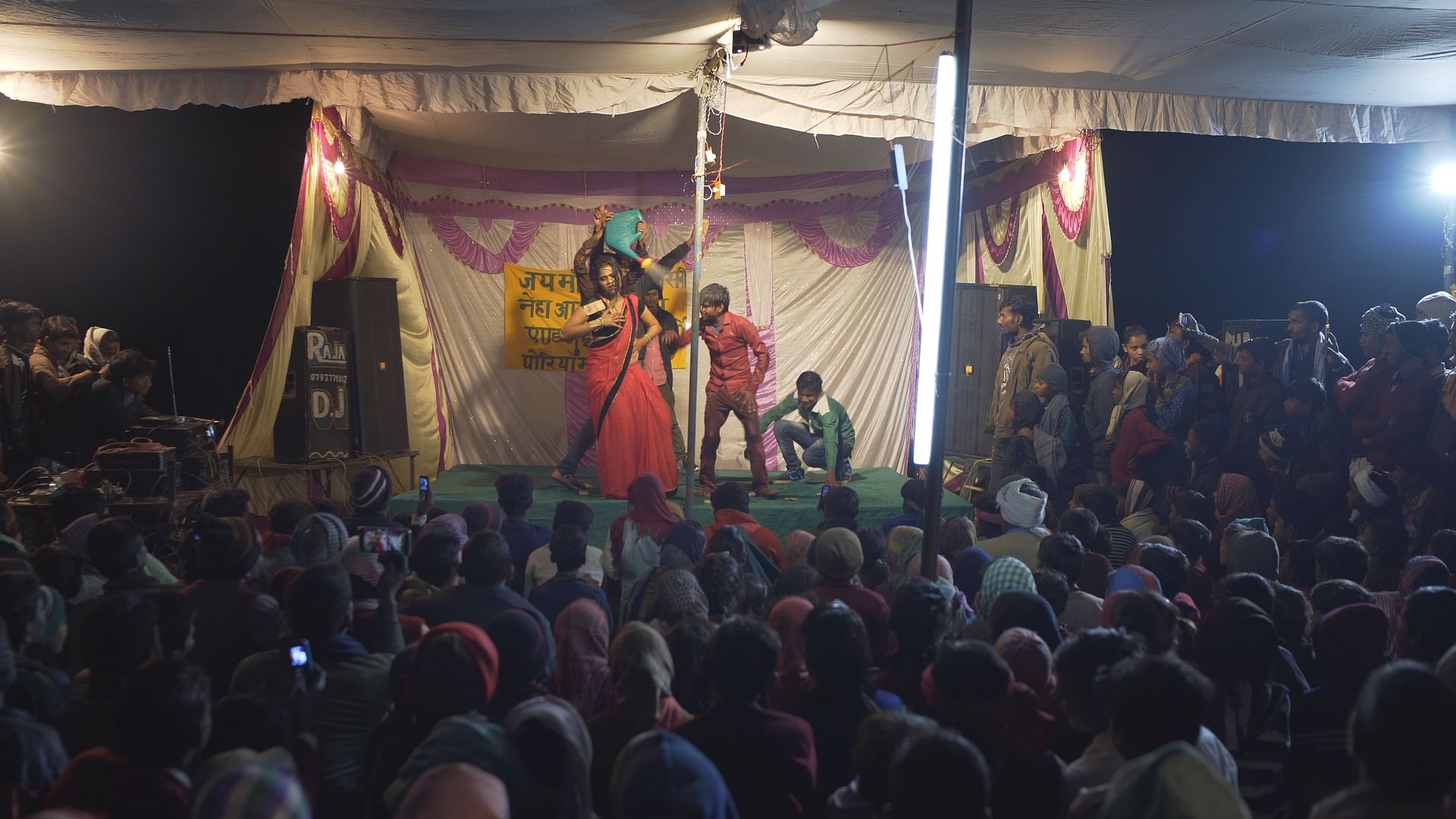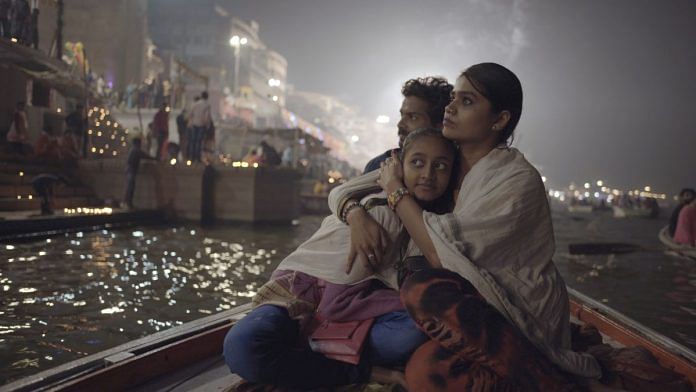New Delhi: It is hard for indie filmmakers to get a theatrical release or a distributor, despite praise from prominent directors. Ritesh Sharma would know–he has been trying for two years now. But his film Jhini Bini Chadariya, an intimate ode to Varanasi, is nowhere close to a theatre screen or OTT platforms. But the film has bowled the crowd over at every film festival he’s showcased it at—from it’s premiere at the 34th Tokyo International Film Festival in 2021 to the latest screening at the Auroville Film Festival.
“I wanted to show it in theaters when so many propaganda films are being shown, so that people can get a different perspective,” said Sharma.
Varanasi is the central protagonist of Jhini Bini Chadariya. The people are used as mere tools who enact their melancholic opera onto its canvas.
A spate of movies have been made in the last decade, where various sides of the city have been explored. One of the most prominent of them is Neeraj Ghaywan’s Masaan (2015), starring Vicky Kaushal and Richa Chaddha, which looks at the violence of caste and gender. Subhashish Bhutiani’s Mukti Bhawan (2016) tackles the idea of aging and death, while Raanjhanaa (2013) was a strictly commercial love story starring Dhanush and Sonam Kapoor. What takes Sharma’s film to a league of its own is the way the pace of the movie belies the crescendo it reaches in the end, with a stark reminder of today’s politics.
“You see Banaras being spoken of as the city of Hindu pilgrimage, or food. But the city I saw growing up in the 90s is also a place of Kabir, Utsad Bismillah Khan and Muslim weavers,” said Sharma. His film is inspired by the popular Banarasi adage ‘Raand, saand, seedi, sanyasi, inse bacche to seve Kashi’, which means ‘Widows, bulls, stairs, saints, save us from them so that we can reach Kashi and attain liberation’. Often attributed to Kabir, it’s a saying every resident of the city has heard. Sharma’s characters Rani (Megha Mathur), Shadab (Muzaffar Khan), Adah (Sivan Spector) and Babu (Utkarsh Srivastav) represent the four elements mentioned in the adage. Through them, Sharma shows Varanasi and its way of life.
The movie revolves around a Muslim weaver, an Israeli tourist and a racy dancer. The tourist befriends the weaver and peels his traumatic childhood during the Babri Masjid demolition riots. In a parallel plot, a group of men gangrape the dancer and set off a chain of events that culminate in Hindu-Muslim violence.
“Stunning, breathtaking, disturbing, evocative. Jhini Bini Chadariya is a tour de force from Ritesh Sharma and his incredible team. Here’s a filmmaker who takes you on a personal journey of pain, suffering and loss,” wrote filmmaker Nikhil Advani on X.
Anurag Kashyap too lauded the film, saying it could only have been made by someone who had access to the city, and who has spent enough time in it to be able to show the city as he has.
Also read: Hindu Varanasi or Mughal Banaras? A Toronto professor wants you to look at hidden histories too
Tension as a character
In Jhini Bini Chadariya, Banaras is the Varanasi that existed before the 1990s, and the city that changed dramatically after 2014. “Ram has entered the city of Shiva now,” said Sharma.
Rigorous two-month workshop, spending time with the dancers and locals of the city, recording the sounds of Varanasi–Sharma has invested a lot of time to show how the city has changed. In popular imagination, Varansi is the land of Hindu spirituality, the land of Ram and ghats and paan. Now, social media has increasingly shifted the focus of the city to its food culture and carefully and often editorially captured in photos atop boats, and in tiny lanes.
But the film does not glorify or commodify the city for easy consumption. It strikes a blow at the concept of the ‘holy city’, and shows it has its own systems of exploitation, and is progressing slowly towards segregation.
“I have used long shots.You want to see the character’s face and expression, but I do not show it because Banaras is the main character,” said Sharma. Tension is both a backdrop in the film, and the outcome it moves toward. The visuals are immersed in the sounds of the city, from loudspeakers blaring Islamophobic speeches, to raunchy songs Rani dances to.

“We have now projected that there are no Muslims in the city, and how the lens shifted for the Muslims. So choosing Shadab’s character was a deliberate choice. He speaks less with words, more with his body language,” said Sharma.
Also read: Hindu driver & Muslim passenger, blind man & escort—two short films tackle prejudice
Devoid of hope
Violence and exploitation are palpable in every frame of the film—Rani dancing suggestively on the streets to earn money to Shadab and Adah’s walk being interrupted hooligans.
Shadab and Rani face the brunt of the city’s exploitation. Rani doesn’t dream of a better life for herself. All she cares about is her deaf-and-mute daughter Pinky, she wants to keep her from entering the same profession. Shadab, a weaver, is crushed between the increasing Islamophobia engulfing his city and machines taking over his job.
There are also moments of love, be it through Shabad’s growing attachment to the Jewish tourist Adah, or his eventual marriage to his friend Nadeem’s sister. But the shadow of the demolition of Babri Masjid looms large, both in the riots that had killed his parents, and in the riots that erupted after the killing of a Hindu leader.
There is resistance too. Even as a politician attempts to rape Rani, she screams “It is my body”.
But Sharma deliberately shows a complete lack of hope— the resistance is futile.
Despite the difficulty in securing a theatrical release, Sharma remains hopeful. A moment at the 26th International Film Festival of Kerala fuels his journey forward. “After the first screening, there was complete silence in the housefull theatre. One man raised his hand, wanted to say something, but instead cried and asked if he could hug me instead,” said Sharma.
(Edited by Theres Sudeep)



